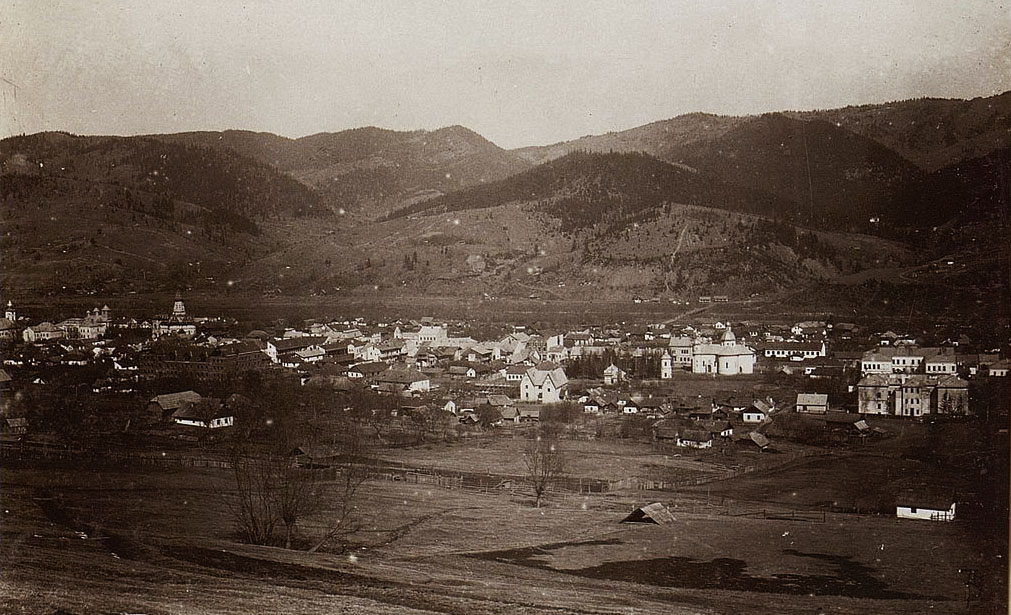LOCATION/ HISTORY
LOCATION
Surrounded by forested peaks, in the center of Romanian Bucovina, the municipality of Câmpulung Moldovenesc today stretches for a distance of 14 km, in the depression of the same name on the middle course of the river Moldova.
Located at an altitude of 620 m, the municipality is located in the central-western part of Suceava County, at the intersection of coordinates 47 ° 32 ‘north latitude with 25 ° 33’ east longitude.
Due to its extremely favorable geographical position, the municipality is located at the intersection of the main railway and road access roads, which connect Moldova with Transylvania and Maramureș.
HISTORY
It was once, long, long ago, when eagles watched the air from the heights, and bison scattered diamonds on their nostrils, when the chirping of birds and the murmur of springs blossomed with song, at the foot of Rarău Mountain and the “Lady’s Stones”, from where rising like living silver the White Spring, was a large and deep pond. The water could not drain, because the rocks, called Pietrele Buhii, were impregnated at that time, and in that pond lived a dragon … ”
This is what a legend says, recorded by Prof. Graţian Jucan in the work Câmpulung Moldovenesc – Vatră folclorică (Bucharest, 1975). The legend says that out of all those who tried their strength in the fight with the dragon, only the outlaw Hălăuceanu came to the beast. His reward was freedom and land, and then looking for a girl and a place to sit, he reached the land where the city is today, exclaiming, with sincere astonishment: Oh, what a long field!

Câmpulung Moldovenesc is an old settlement in the Upper Country of Moldova – carefully researched by historians such as Dimitrie Cantemir, T.V. Stefanelli, Theodor Bălan with a long history, whose beginnings go beyond the data recorded in the deeds. Câmpulung had its hearth on one of the tributaries of Moldova – Valea Caselor – but after the old settlement was burned to the ground with the passage of the Tartars, the people settled on the valley of Moldavia, on the place still called Capu Satului.
The small town here attracted other settlements nearby and was one by one: the center of a union of village communes, where the inhabitants worked together, owned cattle, sheep and pastures together, defended themselves together from the wilds of the mountains and enemy invasions, the capital of a political party, where, according to legends, they stopped coming from Maramureş and Dragoş, dismounting in the country below, on the Moldavian valley, in Baia, and Bogdan I, the founder of the independent feudal state of Moldova: and then, center of the “country” or district, with a special regime in almost the entire medieval era.
The first attestation of the Moldavian Cîmpulung appears in a document from April 14, 1411, from the time of Alexander the Good, through which the Moldovita Monastery received the village of Vama, located below the “Cîmpulung village”. Since then, the Cîmpulung Moldovenesc district has appeared frequently in the documents of the time, in deeds and urchins from the time of Ştefan cel Mare, Bogdan cel Chior, Petru Rareş, which give to the monasteries mountains and valleys from the district land.
The birth, development and evolution over time of the settlement of Câmpulung Moldovenesc were favored by the geographical position, the richness of the soil but especially by the courage and diligence of the people, famous shepherds and cattle breeders, unsurpassed wood craftsmen, hunters, carpenters, furriers.


